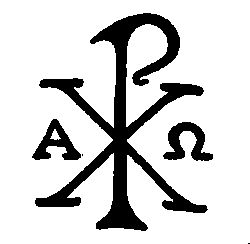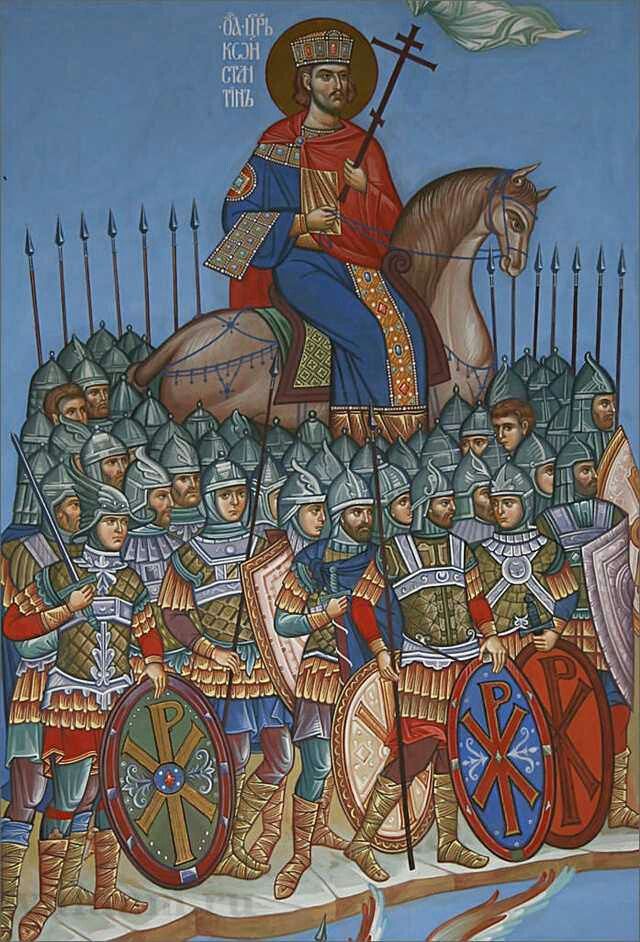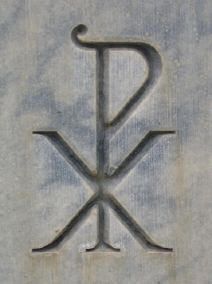CHRISM
An ancient seal of Christian recognition

The chrism (or chrismon) is an ancient Christian symbol formed from the first two Greek letters of the word "Christ": the letter Χ (chi) and the letter Ρ (rho). Together, they form the monogram ΧΡ, which is sometimes found stylized in various forms.
This sign appears very early in the history of the Church. It is found in catacombs, manuscripts, mosaics, liturgical vestments, and icons. It testifies to the faith of the first Christians in Christ's victory over death and in His divine authority.
A deep meaning
The letter X symbolizes the cross of Christ, and the upright letter P evokes the resurrection. Together, they summarize the entire Christian faith: salvation offered by the death and resurrection of the Lord.
In Orthodox art, the chrism is not merely ornamental: it is a constant reminder of Christ's presence and kingship. It is often found engraved on ecclesiastical vestments, chalices, church walls, and tombstones.

From Empire to the Heart of the Heart
The chrism also has an imperial history: Emperor Constantine, after having a vision of the chrism accompanied by the words "By this sign you will conquer" (Ἐν τούτῳ νίκα), is said to have placed it on the shields of his soldiers. This victory at the Battle of the Milvian Bridge (312) marks one of the major turning points in Christian history.
But for Christians, this sign does not refer to an earthly power: it reminds us that true victory is not that of the world, but that of the crucified and risen Christ.

At Holy Shadows
The chrism is printed on several pieces in our "Discipline" collection, in its most stripped-down form. An almost raw, almost military monogram. We wanted it this way to emphasize the essential: it is not an ornament, but a silent cry—a reminder to remain faithful, to remain upright, to remain Christian.